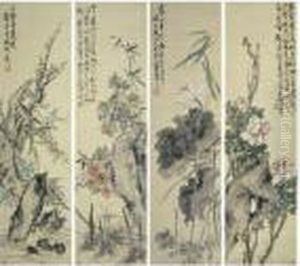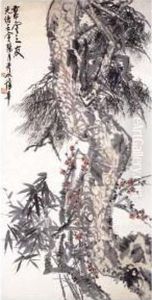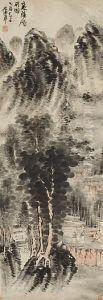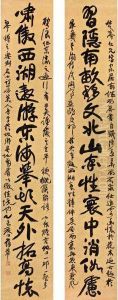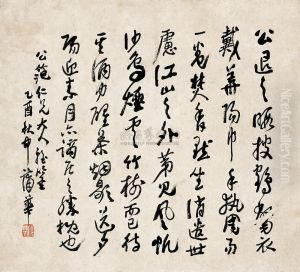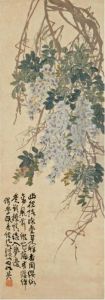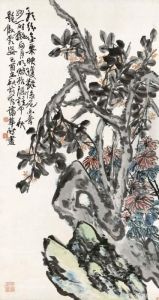Pu Hua Paintings
Pu Hua (蒲华), while not as widely recognized as some of his contemporaries, was a Chinese artist whose life and career details remain relatively obscure, including his birth and death dates. Despite the lack of extensive records, it is known that Pu Hua was active during the Qing Dynasty, a period that spanned from 1644 to 1912. This era was marked by significant political, social, and cultural transformations in China, and it saw a flourishing of the arts, including painting, calligraphy, and poetry.
Pu Hua is primarily remembered for his contributions to Chinese painting and calligraphy. He is often associated with the literati painting tradition, a style that was favored by scholar-officials and the educated elite. This tradition emphasized personal expression, scholarly learning, and an adherence to the themes of nature, such as landscapes, flora, and fauna, which were imbued with symbolic meaning.
Although specific details about his education and training are sparse, Pu Hua, like many literati artists, would have been well-versed in Confucian classics and poetry, which greatly influenced his artistic output. His work likely reflected the values and aesthetic ideals of the literati class, which prized brushwork and simplicity over the more ornate styles popular in the imperial court and among the general populace.
Pu Hua’s legacy, as with many artists of his time, would have been preserved through his surviving works and his influence on subsequent generations of Chinese artists. His contributions to the literati tradition would have helped to perpetuate this style's prominence in Chinese art history, emphasizing the importance of personal expression and the integration of poetry, calligraphy, and painting.
Due to the limited historical records, much of Pu Hua's life and the full extent of his impact on the art world remain a mystery. However, scholars continue to study artists like Pu Hua to gain deeper insights into the rich tapestry of Chinese cultural and artistic history during the Qing Dynasty.
